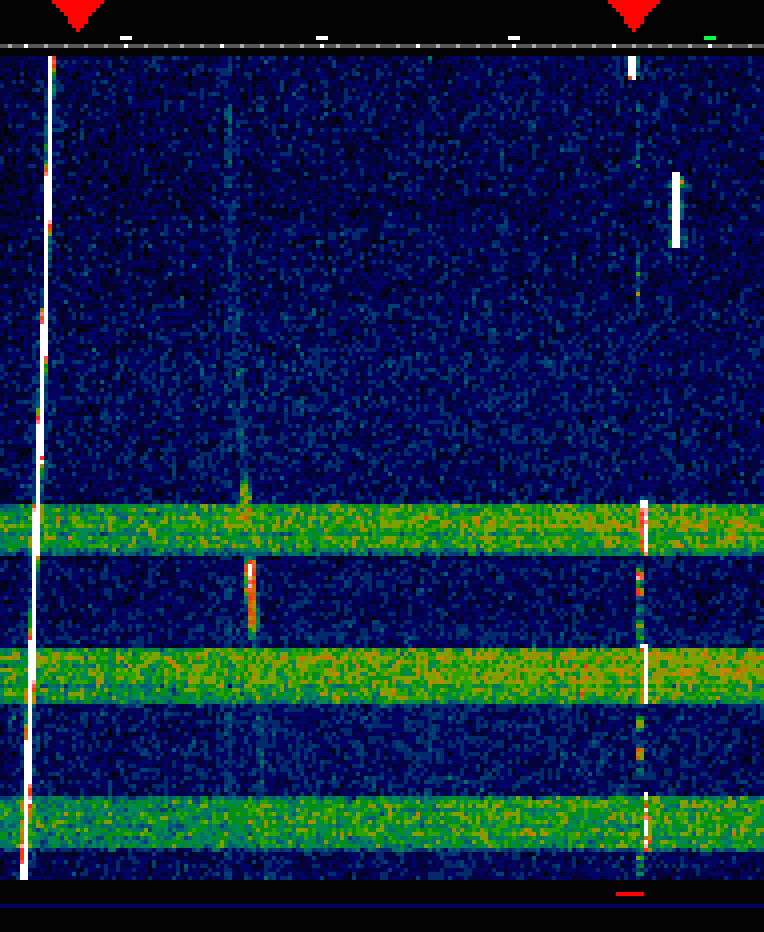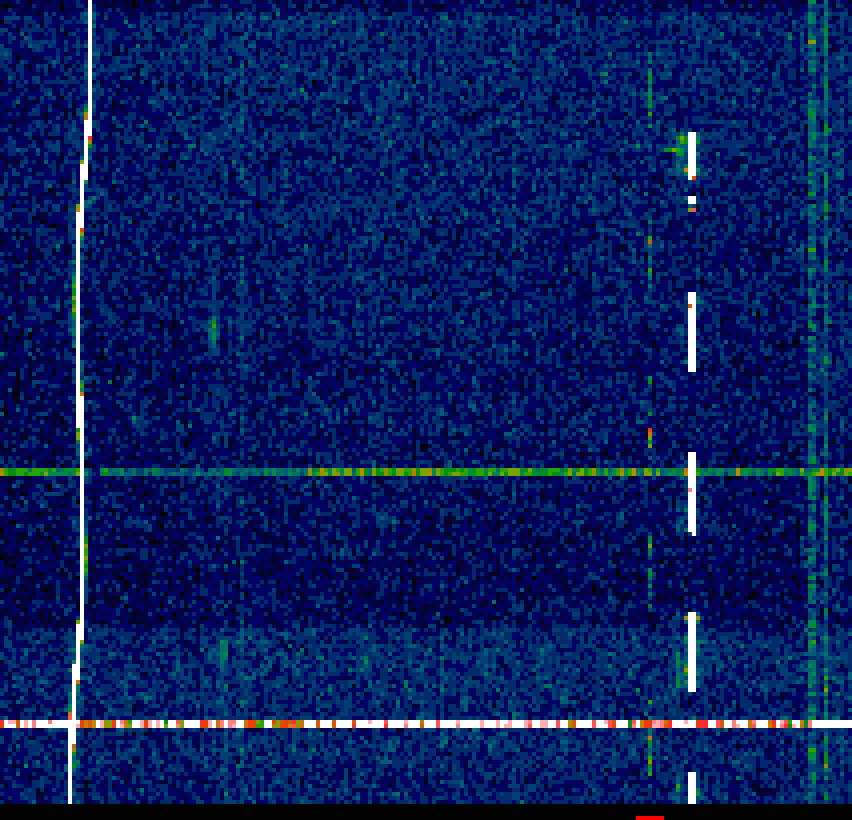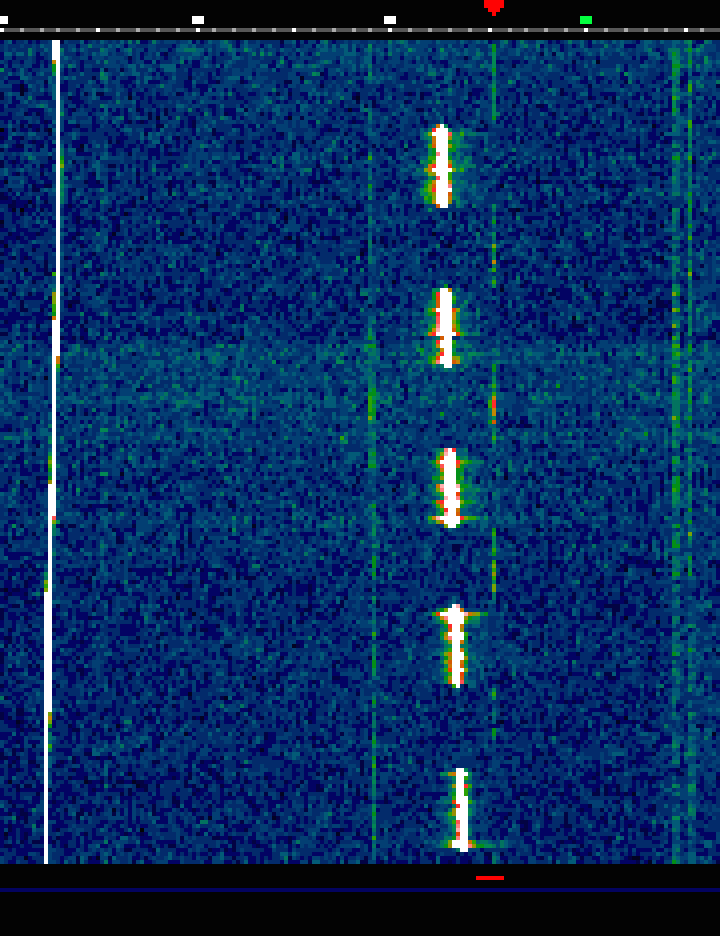8J1RL Syowa base, Antarctica
Kimio, JA9BOH, activated 8J1RL on 144MHz EME during late 1999 and early 2000 from the Japanese Antarctic research station at Syowa base, latitude 69 degrees South, longitude 39 degrees 35 minutes East on the Ongul Islands off the Prince Harald coast of Antarctica. Kimio worked 49 different stations via 2 metres EME using a pair of 3.1 wavelength DJ9BV yagis. The station transceiver was an FT 736 with no CW filter.Images of the 8J1RL EME signal produced by SM5BSZ on Oct 07 1999
The images covers about 20 minutes. The scale goes from black at 0dB over blue, green and red to saturate at +10dB. The exact location of the zero point varies between the images. Red is at about +8dB. The bandwidth is about 2Hz in the graphs on this page. (There are 16 FFT bins behind each pixel - the strongest is shown) At such a narrow bandwidth the signal is actually the carrier of an amplitude modulated signal. The 8J1RL signal peaks at about 8dB on the graphs so in the audio channel at 17Hz bandwidth the S/N for the carrier is about -2dB. The amplitude during key down is about 6dB higher so the S/N for the 8J1RL cw signal is 4dB in 17Hz. By use of coherent cw (the phase of the carrier) it is possible to gain about 3dB by throwing away 50% of the noise. Still 7dB is a very small S/N ratio and since this is the peak value, lasting only for a few seconds a contact is more or less impossible with my modest antenna size (4x14 elements)
The first image (below) shows I2FAK near the left side and 8J1RL at the right side.
The image ends about 30 minutes from the sked time start with a short
transmission by I2FAK.
I2FAK is at 144.117MHz and 8J1RL is at 144.120MHz.

Immediately after I2FAK stopped transmitting I started to call
8J1RL although the signal was a little too weak for me to copy what
he was actually transmitting.
The second image (below) shows the end of the I2FAK sked hour and the
start of the SM7BAE sked period.
The last transmission from 8J1RL (in response to my calling??)
was very close to where I can actually hear the morse code.
I think I heard "BS" but that was not enough for me to start
transmitting "OOO".
It was then obviousely too late for us to complete so 8J1RL is absent
the next period.
On this image the first and part of the second transmission
from SM7BAE are visible.
The signal from 8J1RL is much weaker than 10 minutes earlier.

I had to go away during the sked between SM7BAE and 8J1RL so I do not know if they
made a QSO.
The third image (below) shows what I found on the screen about 30 minutes
from the start of their sked.
8J1RL is visible in each transmission, but not as strong as during
the best period at about 0650UT.

The sked between KB8RQ and 8J1RL was sucessful. The last figure shows
20 minutes of their sked.
